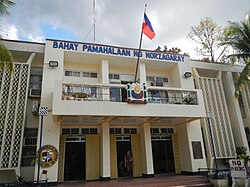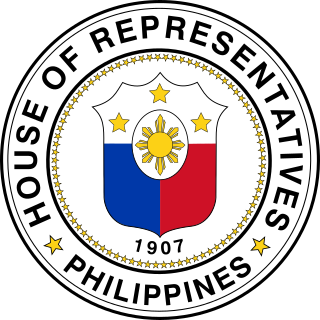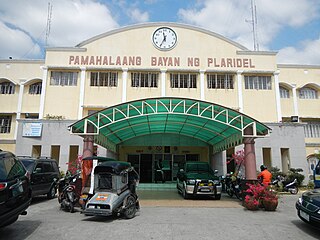| Norzagaray | ||
|---|---|---|
| Municipality | ||
| Municipality of Norzagaray | ||
 Municipal Hall | ||
| ||
 Map of Bulacan with Norzagaray highlighted | ||
Location within the Philippines | ||
| Coordinates: 14°55′N121°03′E / 14.92°N 121.05°E Coordinates: 14°55′N121°03′E / 14.92°N 121.05°E | ||
| Country | ||
| Region | Central Luzon (Region III) | |
| Province | Bulacan | |
| District | 3rd District | |
| Founded | 1860 | |
| Named for | Fernándo Norzagaray y Escudero | |
| Barangays | 13 (see Barangays) | |
| Government [1] | ||
| • Type | Sangguniang Bayan | |
| • Mayor | Geronimo G. Cristobal Jr. | |
| • Vice Mayor | Rogelio P. Santos Jr. | |
| • Electorate | 57,933 voters (2016) | |
| Area [2] | ||
| • Total | 309.77 km2 (119.60 sq mi) | |
| Highest elevation | 1,188 m (3,898 ft) | |
| Population (2015 census) [3] | ||
| • Total | 111,348 | |
| • Density | 360/km2 (930/sq mi) | |
| Time zone | UTC+8 (PST) | |
| ZIP code | 3013 | |
| PSGC | 031413000 | |
| IDD : area code | +63 (0)44 | |
| Climate type | Tropical monsoon climate | |
| Income class | 1st municipal income class | |
| Poverty rate | ||
| • Revenue (2017) | ||
| • Expenses (2017) | ||
| • Total Assets (2017) | ||
| Electricity | Manila Electric Company | |
| • Consumption | 21.23 million kWh (2003) | |
| Native languages | Southern Alta Tagalog | |
| Website | norzagaray | |
Norzagaray, officially the Municipality of Norzagaray, (Tagalog : Bayan ng Norzagaray), is a 1st class municipality in the province of Bulacan, Philippines. According to the 2015 census, it has a population of 111,348 people. [3]

Tagalog is an Austronesian language spoken as a first language by a quarter of the population of the Philippines and as a second language by the majority. Its standardized form, officially named Filipino, is the national language of the Philippines, and is one of two official languages alongside English.

Bulacan is a province in the Philippines, located in the Central Luzon Region in the island of Luzon, 11 kilometres (6.8 mi) north of Manila, and part of the Metro Luzon Urban Beltway Super Region. Bulacan was established on August 15, 1578.

The Philippines, officially the Republic of the Philippines, is an archipelagic country in Southeast Asia. Situated in the western Pacific Ocean, it consists of about 7,641 islands that are categorized broadly under three main geographical divisions from north to south: Luzon, Visayas, and Mindanao. The capital city of the Philippines is Manila and the most populous city is Quezon City, both part of Metro Manila. Bounded by the South China Sea on the west, the Philippine Sea on the east and the Celebes Sea on the southwest, the Philippines shares maritime borders with Taiwan to the north, Vietnam to the west, Palau to the east, and Malaysia and Indonesia to the south.
Contents
- History
- Cityhood
- Geography
- Barangays
- Demographics
- Municipal government
- Elected Officials
- Economy
- Tourism
- Historical and Cultural Heritage
- Infrastructure
- Bulacan 11-billion peso bulk water supply project
- 18-hectare landfill
- References
- External links
It is the location of Angat Dam which sits on the lower realms of the Sierra Madre mountain range, the Dam is notable for being a major water and power supply for the National Capital Region.

Angat Dam is a concrete water reservoir embankment hydroelectric dam that supplies the Metropolitan area water. It was a part of the Angat-Ipo-La Mesa water system. The reservoir supplies about 90 percent of raw water requirements for Metro Manila through the facilities of the Metropolitan Waterworks and Sewerage System and it irrigates about 28,000 hectares of farmland in the provinces of Bulacan and Pampanga.

Metropolitan Manila, officially the National Capital Region (NCR), is the seat of government and one of the three defined metropolitan areas of the Philippines. It is composed of 16 cities namely: the City of Manila, Quezon City, Caloocan, Las Piñas, Makati, Malabon, Mandaluyong, Marikina, Muntinlupa, Navotas, Parañaque, Pasay, Pasig, San Juan, Taguig, and Valenzuela, as well as the municipality of Pateros.



























